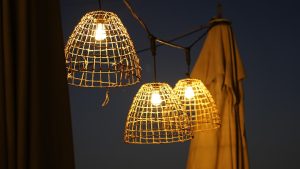The Evolution of Illumination
For centuries, humanity has relied on various forms of artificial light, from candles to incandescent bulbs. However, as society moves towards more sustainable practices, the way we illuminate our homes and communities is also evolving. One of the newest technologies emerging in the lighting industry is DNA light bulbs.
What are DNA Light Bulbs?
DNA light bulbs are an energy-efficient, eco-friendly alternative to traditional lighting options. These bioluminescent bulbs are made from genetically altered marine bacteria that can be programmed to produce light. The process involves inserting a synthetic DNA sequence into the bacteria’s genome, which codes for an enzyme called luciferase. When the bacteria are fed a specific nutrient, luciferase helps them emit a blue-green light.
The Benefits of DNA Light Bulbs
One of the key benefits of DNA light bulbs is their efficiency. They use up to 90% less energy than traditional bulbs, which translates into significant cost savings over time. Additionally, they are more environmentally friendly, as they do not contain toxic materials like mercury, which can be harmful to both humans and the planet.
Another advantage of these bulbs is their versatility. Because they can be programmed to produce different colors and intensities of light, they have the potential to revolutionize the way we light our homes, workspaces, and public spaces. They could be used to create mood lighting, or even serve as a form of art, adding unique designs and patterns to walls and ceilings.
The Future of DNA Light Bulbs
While DNA light bulbs are still in the experimental phase, they hold immense promise for the future of sustainable lighting technology. As researchers continue to refine the process and develop more efficient and versatile bacteria strains, the possibilities for these bioluminescent bulbs are endless.
Not only do they have the potential to help us move towards a more sustainable future, but they could also provide solutions for communities without access to electricity, as they do not require a power source. Imagine the possibilities for developing countries where reliable electricity is limited or non-existent.






More Stories
Enhance Your Living Room with Embedded LED Lights
10 Small Dining Room Lighting Ideas for a Cozy Space
10 Stylish Dining Room Lighting Ideas to Elevate Your Space